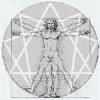B494 <=> B496 [BTG XXX Art, p. 495]
“These theaters of theirs came to have a significance of the greatest importance in the ordinary process of existence of your favorites, and on account of this they built particularly large buildings for this purpose which rank in most of their contemporary cities as the most remarkable constructions.
“It will do no harm, I think, to comment here upon the misunderstanding connected with the word ‘artist.’
“I am bound to comment upon this, because this word was also transmitted to your contemporary favorites from the Babylonian epoch, but it was transmitted not like other words, that is, merely as empty words without sense, but just as one single particle of the consonance of a word then used.
“You must know that the learned beings then in Babylon, the members of the club of the Adherents-of-legominism, were called by the other learned beings of that time who were well disposed towards them, as they also called themselves, by the name which your contemporary favorites would write as ‘Orpheist.’
“This word is composed from two definite roots of words then in use, which in contemporary times would signify ‘right’ and ‘essence.’ If someone was called thus, it meant that he ‘rightly sensed the essence.’
“After the Babylonian period, this expression also automatically passed from generation to generation with almost the same meaning, but nearly two centuries ago, when the beings of that time began wiseacring with the mentioned data, particularly in connection with that ‘empty’ word art, and when various what are called ‘schools-of-art’ arose and everybody considered himself a follower of one or another of those schools, well just then, never having understood its genuine sense and chiefly because among the number of the said schools of art there was also a school of a certain, as the contemporary beings already called him, ‘Orpheus,’ a figure invented by the ancient Greeks, they then decided to invent a new word defining their ‘vocation’ more exactly.

